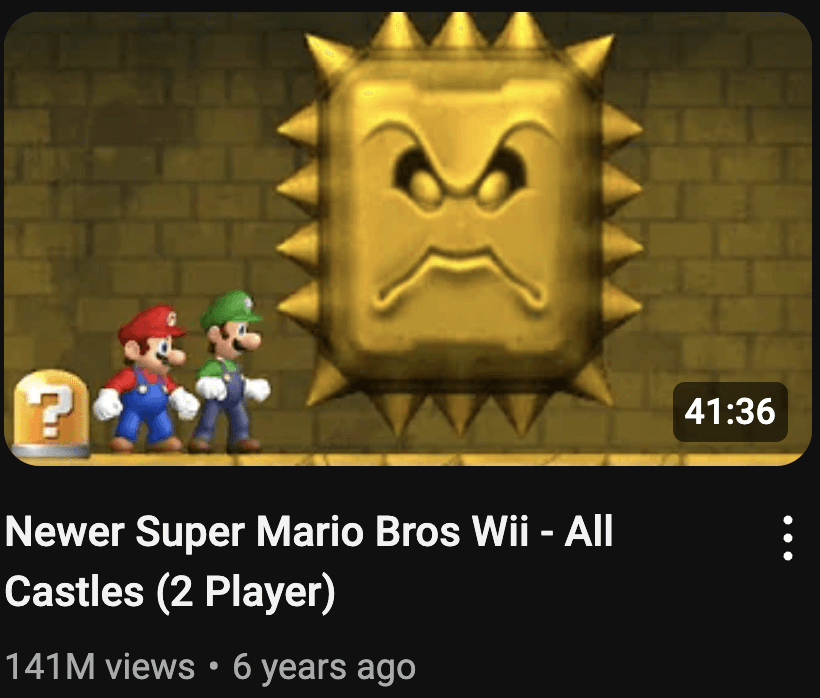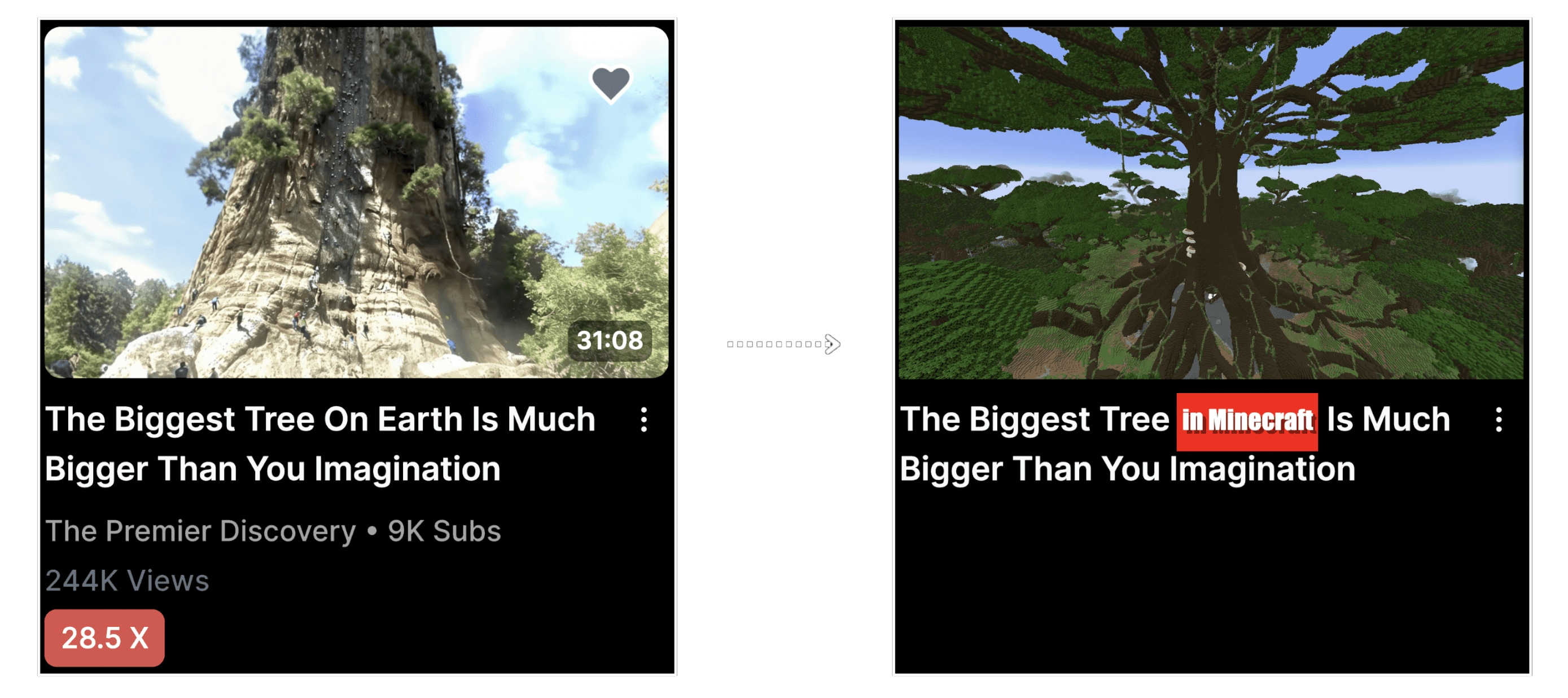
Oct 4, 2024
How To Actually Analyze YouTube Metrics (YouTube Guide)
Aleksander
Have you ever wondered why this happens to your views? Recently, I have seen so many YouTubers confused and frustrated by YouTube analytics. Most people are either using wrong metrics or wrong analysis for YouTube. You are confused, and rightly so! Let’s break down how to actually analyze YouTube data in a valuable way. In this blog post, we cover…
Why markets matters for your YouTube success
How to measure markets for your videos
Why your video’s recommendation is suddenly “switched off”
How to route more traffic to your videos
Why Markets Matters For Your YouTube Success
Most YouTubers are familiar with the term “niches”. For example, you have the “finance niche” or the “gaming niche”. YouTubers often use niches to determine how large the demand is for videos in a “niche”. For example, you look at one of the biggest YouTube channels in your niche, and then you see the total amount of views they have. If we look at the super mario gaming niche, this video will pop up.

This will mistakenly lead me to believe that making a video about anything Super Mario related can get a maximum of 141 million views. Below I have attached the top performing videos from the different Super Mario series, Galaxy and Bros. Notice a difference?

105 million views. Using the Super Mario Bros video as a benchmark for Super Mario Galaxy videos doesn’t work, because the Super Mario Bros series has far more awareness. Super Mario Bros is the original series, while Galaxy is a small spin-off that was part of the Nintendo WII ecosystem. Super Mario Bros spans multiple generations, Super Mario Galaxy don’t.
This means that the total potential audience is larger for Super Mario Bros. The total potential audience is essentially the total potential demand for a video measured in views (in a perfect world).
You will never capture the total potential audience, and you can’t exactly determine what the size is because it continually fluctuates and is unknown. In the Super Mario Bros example, the total potential audience would be everyone in the world that knows about Super Mario Bros and that uses YouTube.

What matters here, is that by targeting more markets, you increase the size of the total potential audience and the views you can realistically get.

This video for example, is the most viewed Super Mario video on YouTube. It is also the most viewed Pacman video on YouTube. The creator of the video made his video relevant for more markets, and exposed himself to a larger potential audience. The video is relevant to fans of both Super Mario and Pacman. If your market is too small, choose a bigger market, or combine several markets.

I have an example from my own YouTube career about exactly this. I used to make gaming videos covering an old Lord of the Rings game. The total potential audience was very small, so I changed to Lord of the Rings lore instead. Immediately, my progress were swift, and I quickly gained traction with the new channel.

I still used some Lord of the Rings Gaming clips in my videos, I just used them in a manner that allowed for far more views as I opened it up to a larger market. This is why markets is so important. Don’t sacrifice your passion, but instead, make it more interesting for a larger group of people!
But how do we actually look at what markets your videos are in?
How to measure what market “you are actually in” in YouTube analytics
It’s one thing to believe your video is exposed to different markets, and another to get confirmation of it. A practical way is to use YouTube Analytics to identify what markets’ your video is in.
Let’s do it step-by-step so you can replicate it. Go to YouTube analytics and select a video. Go to “Reach”, and then click “See more” under “Content suggesting this video”.

You will now be presented by “Traffic sources”. In this column, you can see all the videos that have driven traffic to your video. In this instance, the traffic mainly comes from similar markets related to the Lord of the Rings such as “Lord of the Rings battle/war clips” and “Lord of the Rings lore”.

By looking at this tab, you can quickly identify how your video is performing in different markets.
In my case, my video didn’t tap into many different markets. I was still able to create a very successful video because I tapped into a very large market “Lord of the Rings battle/war clips” and beat lots of the competition.
If your video is not in the market(s) you believed it would be in, it might be because YouTube viewers don’t find it to have the characteristics that the market(s) is defined by. This means you might have to change different filters for your video that the YouTube recommendation algorithm uses to distinguish videos, such as topic, title, thumbnail, video duration, video style, or others.
If you change one of the filters, the YouTube algorithm might categorize your video in other markets. For example, if you change your video title from “Super Mario Battle” to “Super Mario vs Pacman”, the YouTube algorithm might serve your video to a market that’s interested in Pacman.
Now that we have established the important point about markets let’s look more into why this happens…

Why Your Video’s Recommendation Is Suddenly “Switched Off”
One of the more useful metrics in analytics is the impressions metric. Impressions can be used to measure total reachable audience. In other words, how many people that get the chance to watch your content. For my most popular video, that is 17.8 million people.

As you can see, the click-through rate (CTR) is quite low. A very common misconception is that it is bad with a low CTR and that you should immediately change thumbnail if it is low.
While your thumbnail can always be optimized, and changing it could lead to a slightly higher CTR, it is capped at a certain point due to different limiting factors I will list below. When your video starts competing vs certain other top ranking videos in the recommended feed, it’s CTR will drop because of:
-Competition: It’s not just the combination of different markets, or the size of different markets, but also that your video is winning against other videos in the markets’ it’s competing in.

If a viewer had the choice between your video, and other competitors’ videos, which would they choose? You need to be able to compete with the best of the best if you want to create a viral video! Some videos will always be more attractive than yours. Mr. Beast is winning almost every battle in the recommendations feed.
-Relevance, trends and momentum: YouTuber viewer demand is dynamic based on unpredictable trends and events. At certain times your videos will appeal, at other times it won’t.
-Market saturation: You might enter a market that is already saturated with similar videos. If you’re not delivering something that stands out, you will not win against competition.
-Wrong markets: Sometimes YouTube tests your videos in new markets that has no interest for your video.
That’s why your CTR will typically be very high in the beginning, and then turns lower. It simply means your video is competing with other videos, which is a good thing.
The CTR is just a number, the important dynamic here is that the listed factors eventually will lead to a halt in your views; the interest is gone because of one or a combination of the listed factors.

That doesn’t mean it can’t ignite interest at some later point. It simply means the market is satisfied for now. Just look at this video of mine. It took several months before it exploded vertically…

Before that, it had just a few thousands views. It also took several more months for another spike in impressions. Sometimes you need patience for the recommendation algorithm to find the correct market for your video (or for demand, momentum, trends or other things to occur).
How can we ourselves control this? We can’t, but what we can control is which traffic lane we will position ourselves us in!
How To Route More Traffic To Your Videos
The other important implication of the traffic source besides identifying markets your video is served in, is that it shows the videos your video are recommended by, and those that it compete against.

If the videos you get recommended by don’t have a lot of views, demand or momentum, you might need to change up your strategy.

Creating videos in the same markets as content currently high in demand, is like opening a store in a busy shopping street vs a quiet street. In the quiet street, you have less competition but a limited amount of customers. In a the busy street, there’s more competition, but also a much larger customer base. If your offering stands out, you can tap into loads of shoppers/demand.
That’s why you want to be recommended by and compete against videos that have high demand. Yes, your CTR will reduce, but you will also get much more views, which is what truly matters.
So how can you control what videos you will be recommended by and compete against? Like I mentioned earlier, the YouTube recommendation algorithm uses different filters to distinguish videos, such as topic, title, thumbnail, video duration, video style, or others. If you use a viral trend, you can actually attract some of the same market by being categorized together with the viral video.

I wrote a detailed guide about it in this blog post, which I highly recommend you to read if you are interested in using existing demand from viral videos to fuel your own videos for success.
The short version is that you should use the software Viral Dashboard to find viral videos.

Once you have identified viral videos which are high in demand with Viral Dashboard, you create a spin-off of the viral video(s). You create your own video that’s unique and tailored to your channel offering, but which also positions your video close to the viral video.
By doing this, you get recommended in the same markets as the viral video. You can then use a lot of the same demand and increase your chance of getting more views!
As a thanks for reading this entire blog post, I am giving you a special coupon code: EARLYBIRD2024. That gives you 30% off for a year’s subscription of Viral Dashboard (that’s not even $6 month).
Subscribe today, and increase your chance of creating viral videos!
